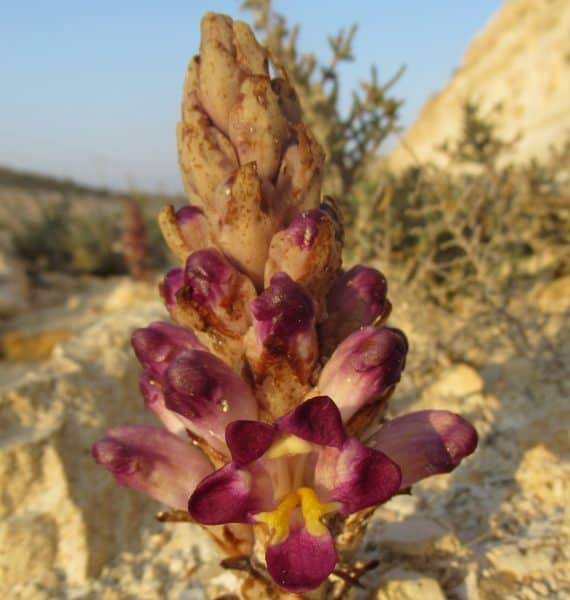Cistanche are a remarkable genus of parasitic plants, some of which are traded widely for herbal medicine or have historical local importance as food. Despite their importance, little or nothing is known about the biology of most species and their taxonomy remains confused, hindering identification. A growing body of research into the cultivation of pharmacologically well-characterised Cistanche taxa has enabled regional supply of traditional herbal medicine at low-level cost and intervention. In the context of a global desertification crisis, there is significant potential to expand cultivation of Cistanche beyond China, as an ancillary crop alongside vegetation planted to halt land degradation. However, to realise this potential and to monitor trade to control any possible unsustainable harvesting of threatened wild populations, robust taxonomy informed by both morphological and molecular data is needed. We discuss this in our latest paper: https://nph.onlinelibrary.wiley.com/doi/10.1002/ppp3.10215
肉苁蓉属植物有时也被称为“沙漠风信子”, 属内包含多种引人注目的寄生植物, 它们常常作为药用植物进入贸易市场, 还是区域性的传统食物。尽管它们有重要价值, 但是人们对肉苁蓉属内大多数植物知之甚少, 属内物种的分类仍然混淆不清, 阻碍了物种鉴定。肉苁蓉属植物的药理性质逐渐清晰, 越来越多的研究者开始关注它们的栽培种植技术, 这种低成本、低干预的种植方式可以满足传统草药的供给需求。在全球沙漠化的危机背景下, 肉苁蓉属植物可以作为辅助作物生长在防沙固沙的屏障植物上, 所以极有潜力扩大种植、走出中国国门。然而无论是将此潜力转化为现实, 还是监管现有交易, 或是管控针对野外濒危种群的破坏性采集, 都需要建立在可靠的植物分类学基础上。
